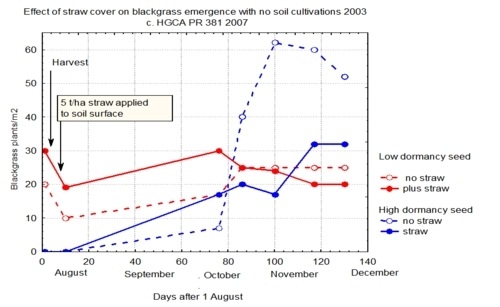mikep
Member
- Location
- Arse end of Surrey, UK
if fields have very bad bg then early drilling is not an option or planting a winter crop is best avoided
my aim is to sort bg before planting a wheat crop
if a field has patches then eliminate bg in the break crop by preventing it from seeding kill out the patches
another option is to plough properly after rape which gives time to produce a seed bed this is only a last resort on properly drained notilled land no good if cultivations have buried bg
the big down side is worm destruction from ploughing although with dry soil after rape the worms are deeper in the ground the problem with ploughing is in a dry year when germination of the wheat can be delayed
in the 1990s we only had enough rain to get wheat to grow in late November one year after ploughing this reduced yield
in an equally dry year min tilled wheat established by the end of September produced top yields
bydv control is an unknown problem here in the last 20 years
it came into prominence in the early 1980s with early September planting every one sprayed after then but in the last 25 years I have seen very little from end of September plantings isthat because every one sprays so there is little about or do we just plant a bit later and the real problem here is only for early September planting
Sorry to say but anything that hasnt been a problem for a while is just waiting. Either neonics will be banned or become inefective as pyrethroids are. Need to farm WITH the pests at a level that is acceptable. Zero tolerance got us into the sh!t in the first place and will only dig us deeper.








